No matter where you travel in the world, you’ll probably come across some interesting English flowers.
Generally speaking, the most visually appealing and fascinating flowers are associated with warmer, tropical climates. However, woodlands, fields, and moors in England (U.K) are home to some absolutely stunning, often beneficial flora.
We’ve compiled a list of 26 of the most common and intriguing wildflowers found in England. Please note that many of these flowers are also native to other countries, including different areas of the U.K. and even entirely separate continents. However, all flowers on this list are native to and present in England.
1. Primrose (Primula Vulgaris)
Primrose is a common wildflower in England, although it’s also native to other areas of the U.K. as well as Southern and Western Europe, Southwest Asia, and Northwest Africa.
This pretty flower’s name is derived from the Latin word ‘primus’, which translates to ‘early’, referencing the fact that primrose flowers are some of the first to bloom after the winter months.
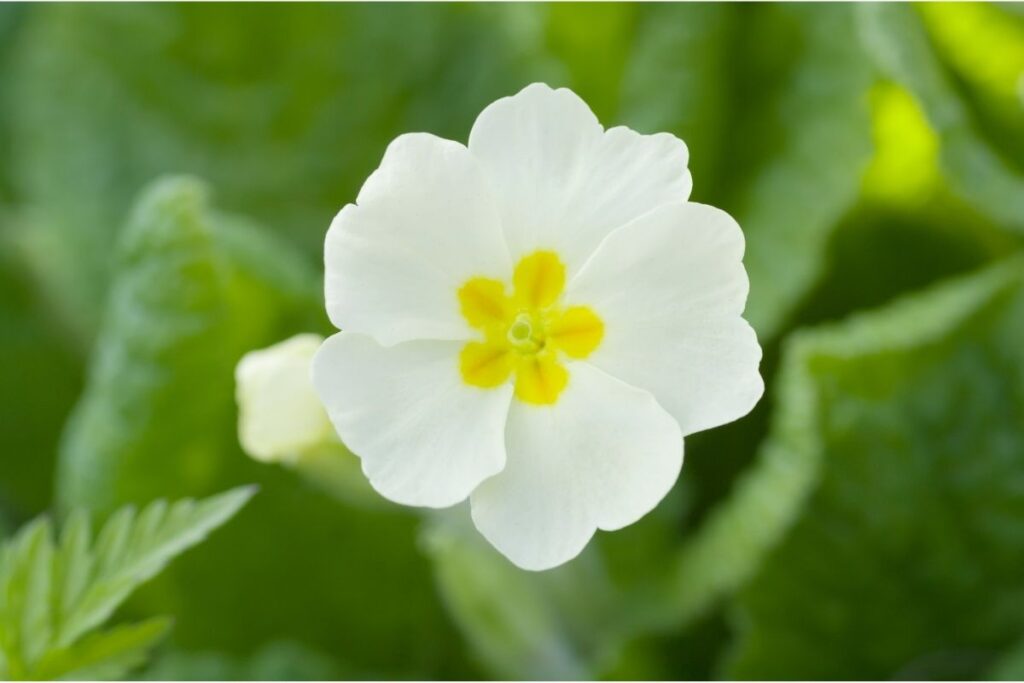
2. English Bluebell (Hyacinthoides Non-Scripta)
You might also know the English Bluebell as the Common Bluebell, and you can also find this delicate, colorful flower in other Atlantic regions, but it’s very common in the British Isles. Bluebells are usually found growing in woodland areas and near hedges. Symbolically, bluebells represent gratitude and humility.

3. Lily Of The Valley (Convallaria Majalis)
Lily of the Valley is a sweet-smelling, bell-shaped flower that is native to a significant part of the Northern Hemisphere, including England, the rest of Europe, and parts of Asia. Fascinatingly, Lily of the Valley was used during the First World War to counteract the effects of gas poisoning.

4. Daisy (Bellis Perennis)
There are many different species of daisies in the world, but Bellis perennis is extremely common in England, to the point that it is also known as the English Daisy.
Daisies are sometimes considered invasive depending on where they grow, but both the leaves and flower heads are edible and nutritious.

Related: 37 Different English Lavender Plants (Including Photos)
5. Cowslip (Primula Veris)
Cowslip goes by many names, including Cowslip Primrose and Oxlip. Cowslip is closely related to Primrose (see above) and similarly, usually blooms in the early spring, in meadows, hedgerows, and woodlands.

6. Wood Anemone (Anemone Nemorosa)
Wood Anemone is a member of the Buttercup family and can be found growing in various areas in England, from woodlands to gardens.
You can often tell if an area of woodland is ancient by seeing how much Wood Anemone is present since these flowers are very slow-spreading and only grow about 6 feet per century.
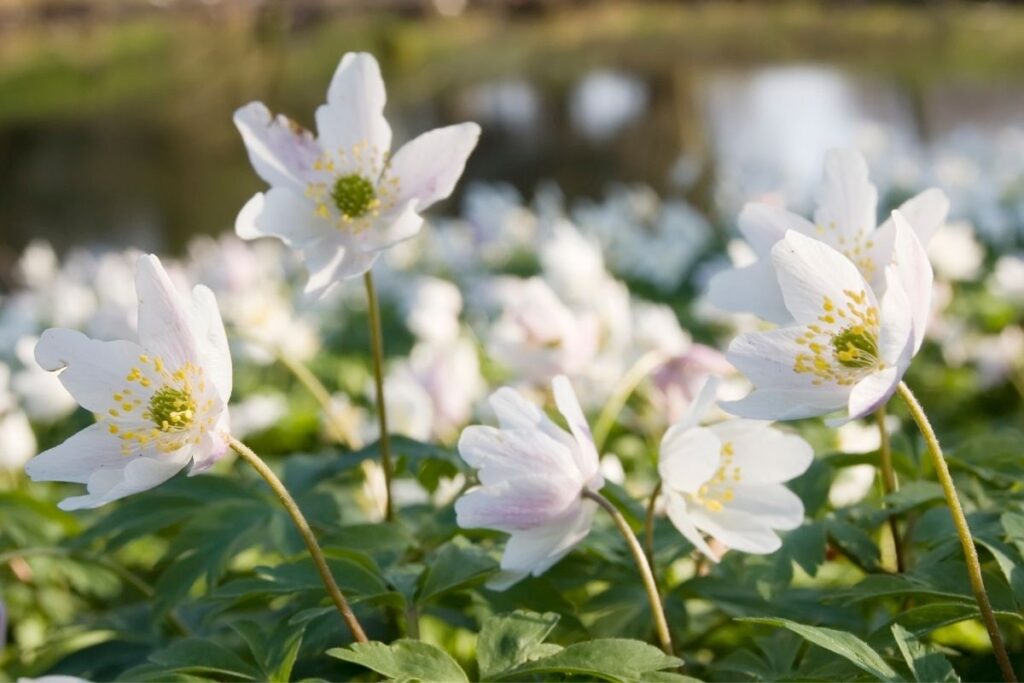
7. Snake’s Head Fritillary (Fritillaria Meleagris)
Snake’s Head Fritillary catches the eye with its pink and purple coloring and distinctive chequered patterns.
Although this flower is native to other areas besides England, it is specifically associated with this part of Britain because of its association with Covent Garden and the meadows near the River Thames.

8. Corncockle (Agrostemma Githago)
Corncockle is a purple-pink flower that is native to most of the U.K., but it originates from Oxfordshire, which is in England.
This rare wildflower may be visually appealing, but the seeds are very poisonous. While they might not affect humans severely (at least in small quantities), animals can have fatal reactions.

9. Foxglove (Digitalis Purpurea)
Another poisonous flower that is native to England, as well as other parts of Europe, Asia, and Africa. These tubular flowers grow in clusters and they can be different colors, from white to red, although the purple foxglove is the most widespread.
Despite being toxic to humans, Foxglove is very attractive to bees and other pollinators.

10. Stinking Iris (Iris Foetidissima)
The Stinking Iris is also known as the Gladwin Iris or the Roast Beef Plant. The reason for these names is that Iris foetidissima has a strong smell that is reminiscent of beef when the leaves are crushed.
These yellow and dark purple flowers can be found throughout England’s woodlands and hedgerows between May and July.

11. Common Knapweed (Centaurea Nigra)
The words ‘common’ and ‘weed’ may not make the Common Knapweed sound like the most appealing of flowers, but the bright purple and pink colors of this flowering plant make it very eyecatching. With that being said, wear gloves if you handle Common Knapweed as it contains carcinogens.
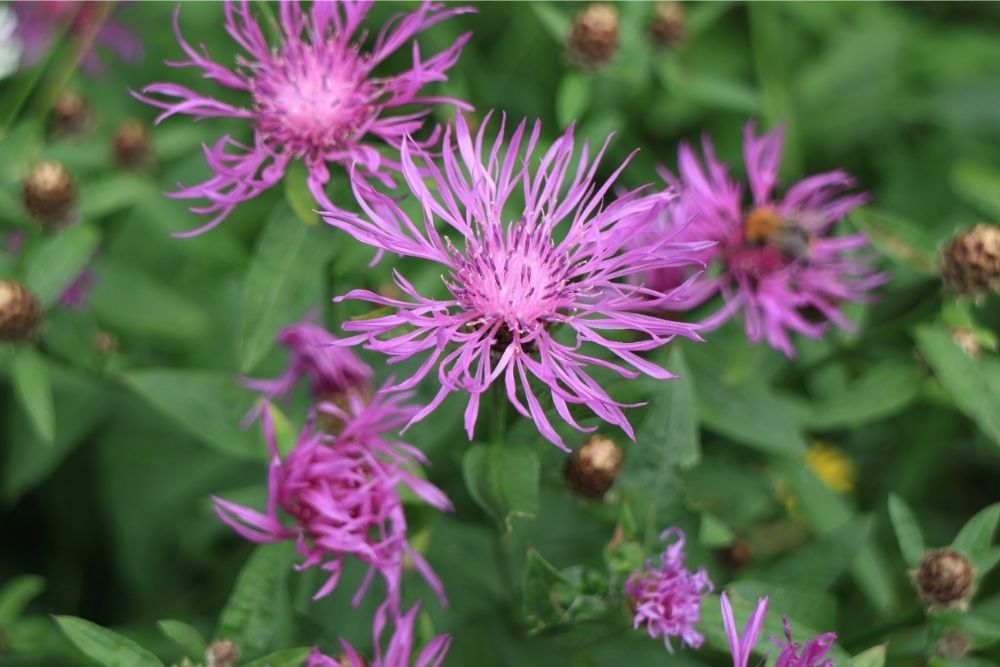
12. Viper’s Bugloss (Echium Vulgare)
Viper’s Bugloss is another plant that doesn’t sound particularly inviting based on its name alone, but the blue flowers and spiky foliage of this plant are quite visually striking.
Native to the majority of European countries, including England, this flower has come to symbolize falsehood, so this is not a flower to offer as a gift!

13. Hemp Agrimony (Eupatorium Cannabinum)
Hemp Agrimony is actually part of the daisy family and is native to Britain, so it can be found across many areas of England.
The clusters of pink flowers that bloom attract pollinators like bees and have even been used to make medicines for ailments like colds and fevers, although there isn’t enough evidence to prove effectiveness or safety.

14. Common Dog Violet (Viola Riviniana)
The Common Dog Violet prefers to grow in grassy, woodland areas, and hedges with plenty of shade. Luckily, there are plenty of areas like this in England, which is why the Dog Violet is so common in this country. The Dog Violet is edible and the leaves can be made into tea.

15. Honeysuckle (Lonicera Periclymenum)
Native to the Northern areas of North America, Asia, and Europe (thus including England), Honeysuckle is a flowering plant that also produces berries. Honeysuckle can sometimes be mildly toxic for humans, but moths and birds are very drawn to its scent.
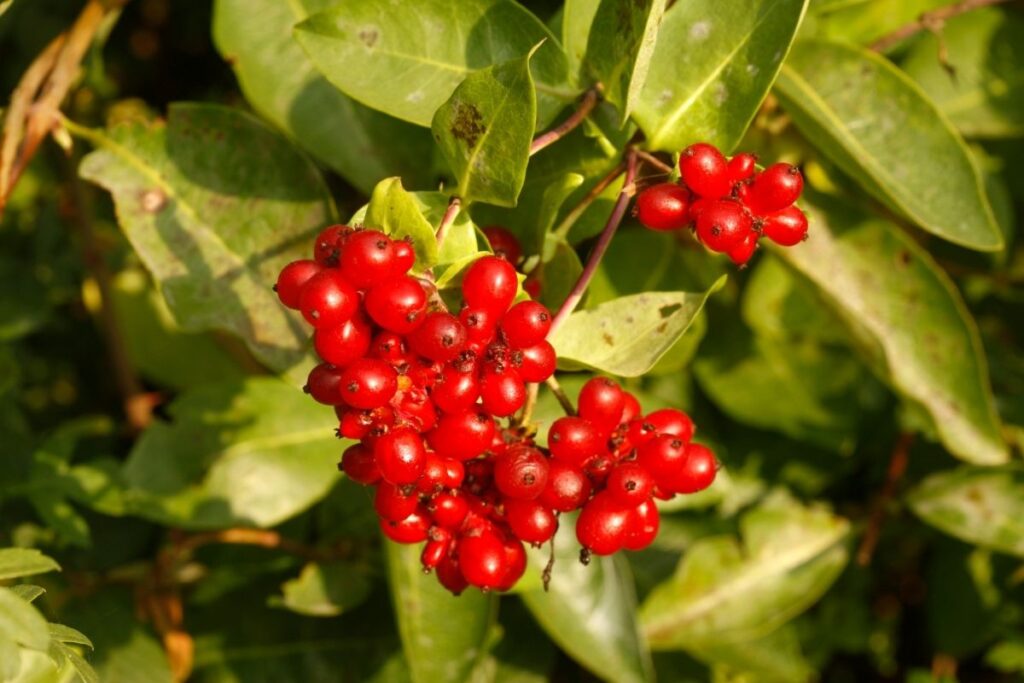
16. Cheddar Pink (Dianthus Gratianopolitanus)
Cheddar Pink is a flowering plant so named because it was originally discovered at Cheddar Gorge (a gorge in Cheddar, Somerset) 3 centuries ago. The flowers of the Cheddar Pink plant range from almost white to very bright pink, and they have a pleasant scent.
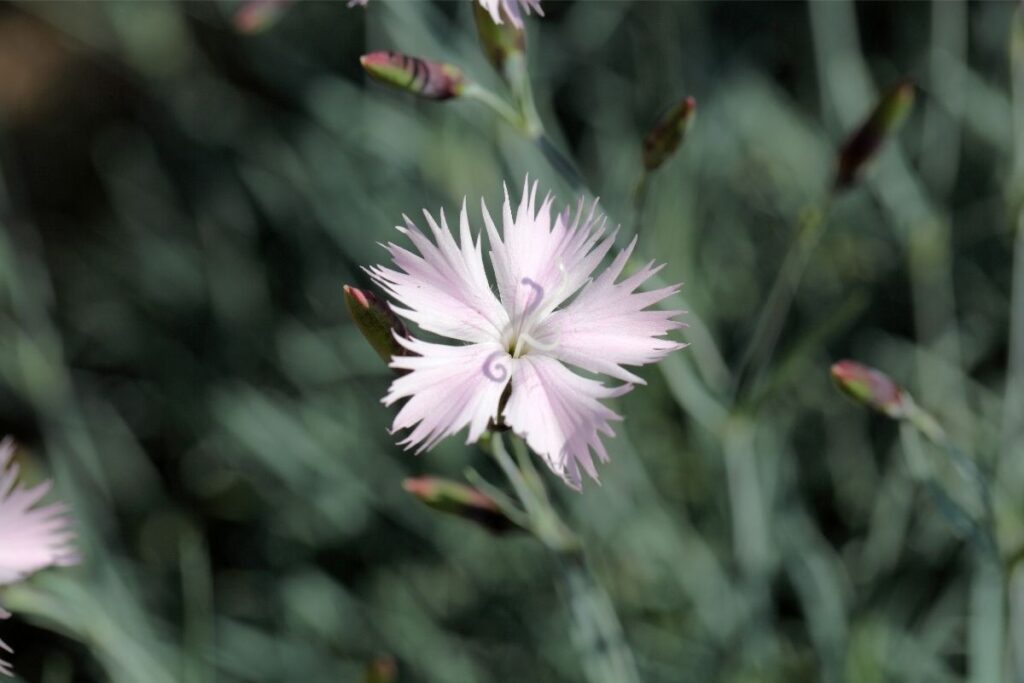
17. Dog Rose (Rosa Canina)
Roses are emblematic in England because the country is represented by the Tudor Rose (a red rose). The Dog Rose, however, is one of the most common Rose species in England. It’s considered the most variable wild rose species and the most abundant as well.

18. Enchanter’s Nightshade (Circaea Lutetiana)
Enchanter’s Nightshade might sound as though it’s related to other members of the nightshade family, but in fact, Circaea lutetiana is a type of primrose or willowherb. It is a herbaceous, perennial plant that prefers to grow in damp woodland areas.

19. Columbine (Aquilegia Vulgaris)
Columbine can be found in England throughout most of the year because it grows perennially. Its botanical name is derived from the Latin for ‘eagle’ because of the shape of its petals. Flowering occurs in spring and summer.

Related: Nature is Truly Delightful! 10 Different Types Of English Trees
20. Sweet Violet (Viola Odorata)
Like Dog Violet, Sweet Violet is a very common flower in England. This is a small but resilient flower that can survive in challenging conditions. Technically, sweet violet is actually a herb but the purple (and occasionally white) flowers are truly beautiful.

21. Wild Garlic (Allium Ursinum)
Wild Garlic goes by many other common names, for example, Wood Garlic, Cowlic, Bear’s Garlic, Bear Leek, and others. Wild Garlic bears white flowers with pointed petals and it is protected under Britain’s Wildlife and Countryside Act, meaning it is illegal to dig up this plant.
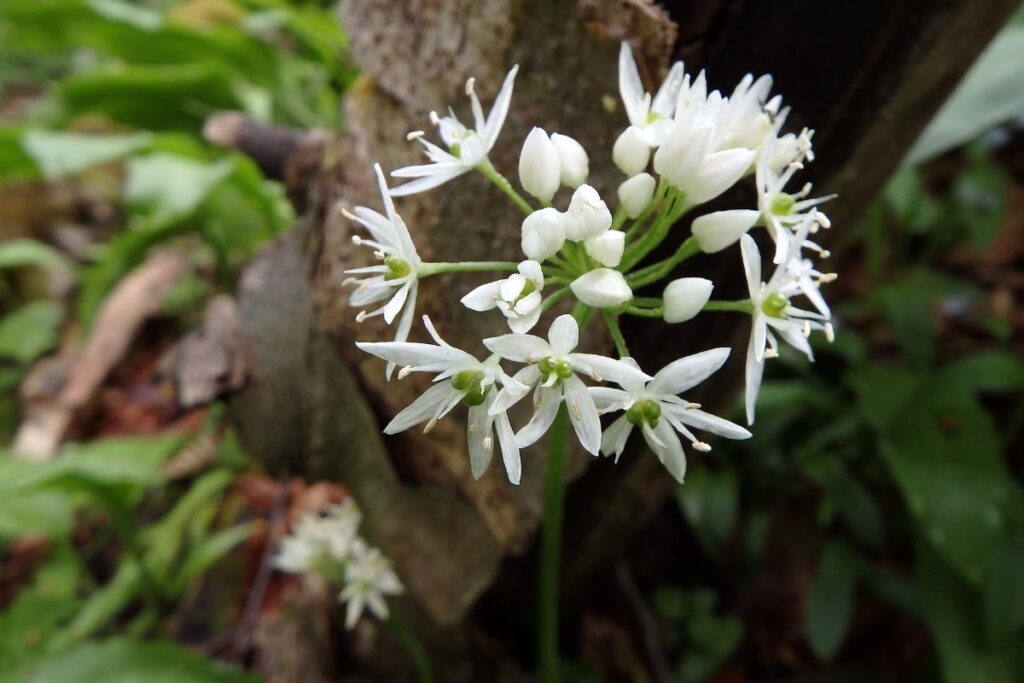
22. Stinking Hellebore (Helleborus Foetidus)
Stinking Hellebore, like Stinking Iris, has an unfortunate name due to the fact that crushing the leaves of this flowering plant can release a meaty odor similar to beef. The flowers themselves don’t smell off putting, however.

23. Pasque Flower (Pulsatilla Vulgaris)
One of England’s most common native flowers is the Pasque Flower, which is named after the word ‘paschal’, which means ‘Easter’. This is because the purple flowers typically bloom in April. They favor dry growing conditions in fields and meadows.

24. Betony (Stachys Officinalis)
Betony, also known as Hedgenettle, Bishopwort, and Wood Betony, is a plant that produces purple flowers and is native to the U.K. It’s part of the mint family and can be found in England’s heaths, woodlands, meadows, and hedge banks.

25. Meadow Cranesbill (Geranium Pratense)
Meadow Cranesbill got its name from its favorite growing environment: hay meadows. However, this purple-blue flowering plant can be found sprouting up in other grassy areas. This is a perennial plant that grows in clumps and spreads easily.

26. Sweetbriar Rose (Rosa Rubiginosa)
Sweetbriar Rose is another rose species that is both native to and popular in England. This rose species is deciduous, and despite its sharp thorns, it symbolizes love and purity. Sweetbriar Rose is tolerant of most soil conditions so it’s easy to grow, but it can become invasive.

Final Thoughts
Many well-known flower species, including daisies and violets, can be considered English flowers because of their native status in England as well as in other countries.
Although the majority of these English flowers are wildflowers, many can easily be cultivated and grown in gardens and greenhouses. Just make sure that you know about a flower’s toxicity levels and ideal growing conditions before attempting to grow it yourself.







